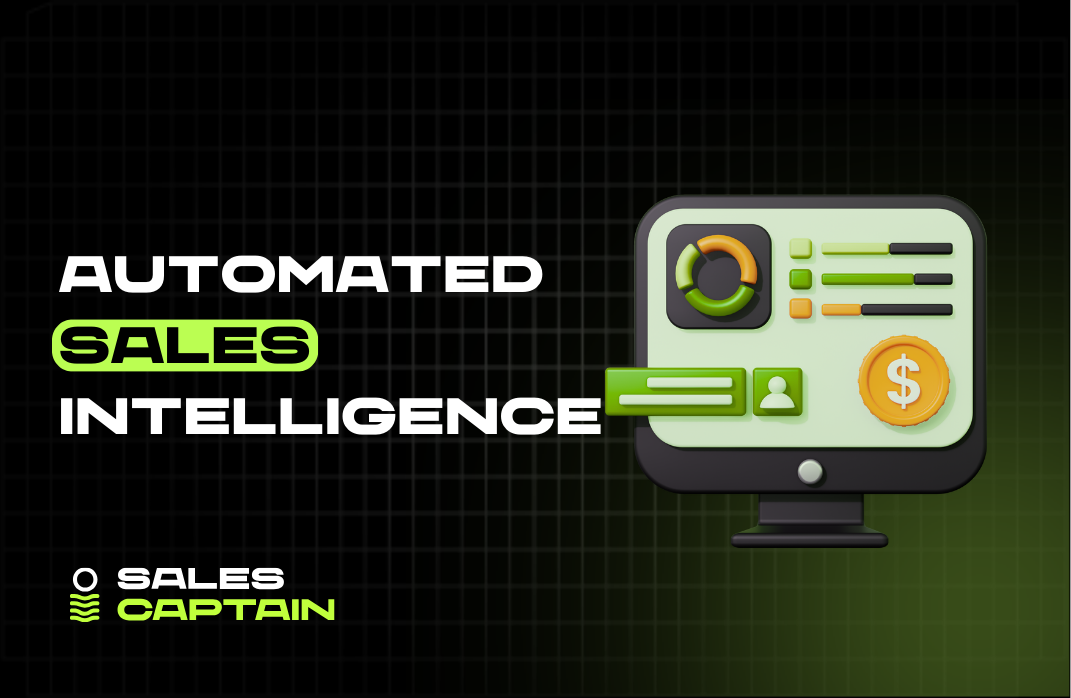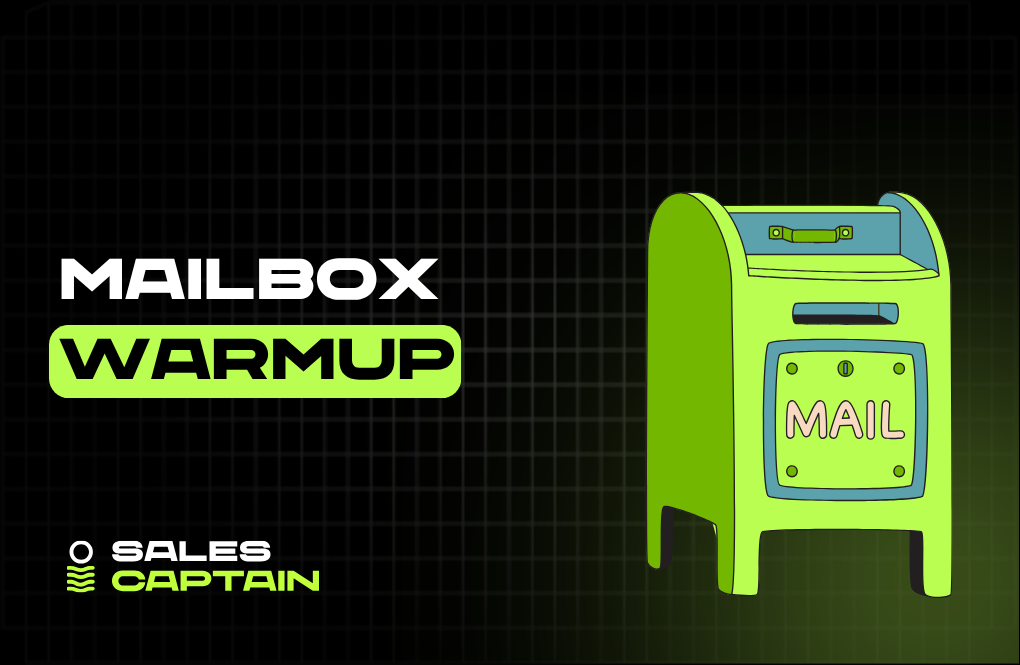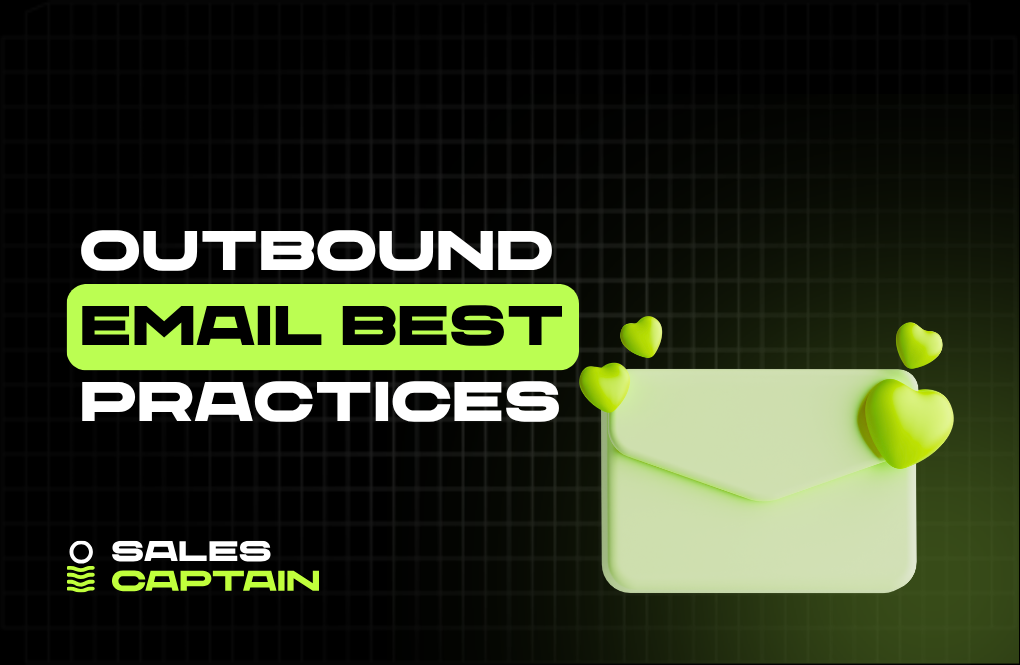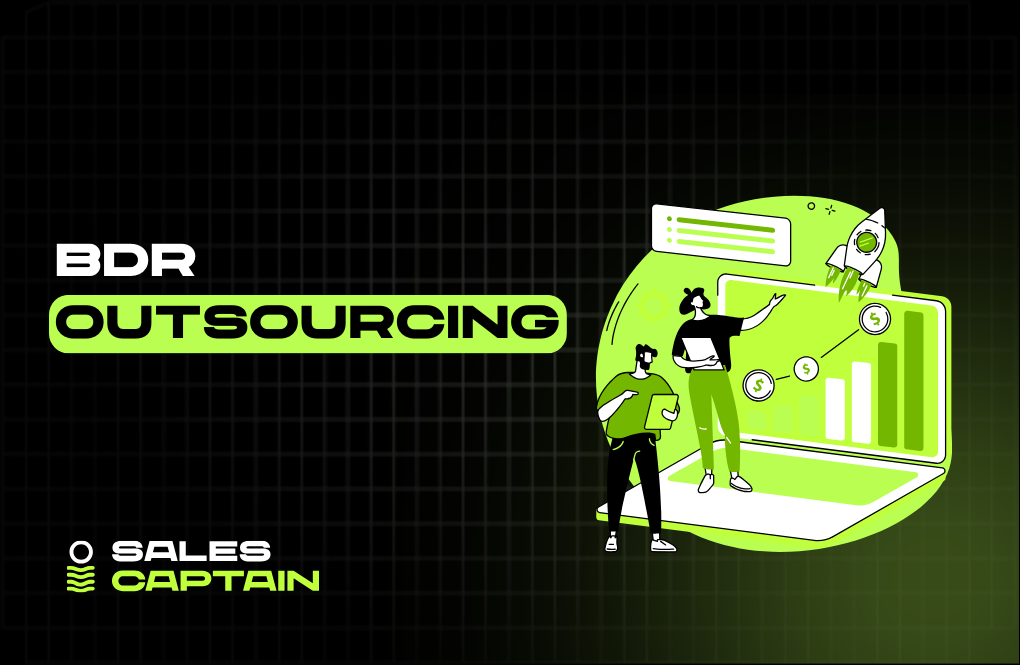

How to Close More Deals with Cold Outreach


The Cold Outreach Advantage in Closing Sales
What is cold outreach? And why does it still work?
Cold outreach is exactly what it sounds like. You're reaching out to someone who didn’t ask for it. No warm intro. No prior conversation. Just a message out of the blue.
And yes, it still works. But only when it’s done right.
The old-school volume game? That's dead. People delete generic pitches without blinking. But targeted, thoughtful outreach? That lands. It doesn't feel random. It feels relevant.
That’s the trick. Cold outreach is effective when it's based on clear signals. Like if their company just raised funding. Or they’re hiring five SDRs. That kind of timing makes your message feel smart, not spammy.
Outreach fails when it feels lazy. But when it’s grounded in context, it becomes one of the fastest ways to create a real pipeline from scratch.
The role of outreach in driving new deal opportunities
Most pipelines aren’t coming from ads or inbound anymore, especially if you’re selling to mid-market or enterprise. That’s where outbound steps in. And it’s not just for filling the top of the funnel.
Well-run cold outreach does more than “book meetings.” It puts your message in front of buyers. It pressure-tests your positioning. It builds brand awareness long before they visit your site.
If you treat outbound like a system, using data, signals, and workflows, you’re not just sending emails. You’re launching campaigns that surface real buying intent.
Outreach turns a name in a database into a real conversation. And every closed deal starts there.
Focusing on quality to close more meaningful deals
Anyone can send 1,000 emails. But if they’re going to the wrong people, or saying the wrong things, it’s just noise.
The new outbound play is all about precision. Targeting 50 high-fit accounts with sharp, relevant messaging beats blasting thousands with the same pitch.
The goal isn’t just more replies. It’s better ones.
When you zero in on the right companies, right timing, and the right message, you don’t just book meetings. You open doors to deals that actually close.
Because closing starts long before the discovery call. It starts the moment they open your email.
How to Target the Right Prospects to Boost Close Rates
Defining your ideal customer profile (ICP)
If you want to close more deals, start by talking to the right people. Sounds simple, but most teams still cast too wide a net.
Your ICP isn't just about company size or industry. It's about finding the accounts that need what you offer, will get value fast, and are ready to move.
Ask things like:
- Who benefits most from our product?
- Which roles are feeling the pain we solve?
- What types of companies close quickly and stick around?
Once that's nailed, look deeper. Add behavioral signals. Are they hiring sales reps? Did they raise funding recently? Do they use a competitor or a complementary tool?
That’s how your ICP moves from a guess to something you can act on.
Researching and qualifying leads effectively
Titles and industries aren’t enough. You need insight that helps your message hit harder.
Look at what the company is doing. Are they growing? Opening new roles? Launching products?
Then zoom in on the person. What’s their actual day-to-day? What goals or problems are probably sitting on their desk right now?
You don’t have to spend hours on this. Tools like Clay help you automate research while keeping it personal. Pull data like recent hires, tech stack, or even quotes from blog posts. It’s fast, scalable, and makes every message sharper.
Prioritizing high-fit prospects over volume outreach
More leads won’t help if they’re the wrong ones.
When you focus on fit, your outreach gets tighter. Fewer emails, better replies. That’s the game.
Use filters. Score accounts. Pay attention to timing and intent signals. A lead with real potential beats a hundred cold names any day.
Outbound only works if it’s aimed right. Focus less on how many messages you send, and more on who you send them to. That’s what gets you closer to the close.
How to Write Cold Emails That Close More Deals

Crafting subject lines that earn attention
Most people don’t read cold emails. They scan the subject line, decide in half a second, and hit delete. So yours needs to feel like it’s worth their time.
Forget clickbait. Just be specific. Clear usually wins over clever.
A few ideas that actually get opened:
- “Quick question about your Q3 pipeline”
- “Saw you’re hiring AEs, got a thought”
- “[Name], idea on scaling your demos faster”
If your subject could’ve come from a random SaaS sales email, rewrite it. It should sound like something a colleague might send. Keep it short, skip the fluff.
Personalized openers that build immediate relevance
You’ve got about two lines before they bail. If you open with “Hope this finds you well,” just stop. Start over.
Instead, say something only someone who did a little homework would know. Not creepy-stalker-level, just… thoughtful.
Like:
- “Congrats on the new sales manager hire, looks like things are ramping up fast.”
- “I saw your post about missing quota targets. Brutal, but honest. Got a quick idea on that.”
When it feels like the message is written just for them, people keep reading. If it feels like it went to 500 people, it dies right there.
Messaging that speaks to the prospect’s needs
Here’s the part where most reps mess up. They jump straight into what they’re selling. Big mistake.
Nobody cares about your product right away. They care about their problems. Their goals. The thing keeping them up at night.
So instead of “We help companies automate reporting,” say something real:
- “I work with sales leaders who are buried under manual pipeline reports. If that’s a thing for you, I’ve got something that might help.”
Now you’re speaking their language. Now it feels like a conversation, not a pitch.
Using clear CTAs to guide the next step
End with something simple. No need to be overly formal or weirdly polite. Just ask.
A few lines that work:
- “Want me to send more details?”
- “Open to a quick 10-min call next week?”
- “If you’re curious, I can share a 2-minute screen recording.”
Keep it low-friction. No big asks. Just a small next step that’s easy to say yes to. That’s how you start turning replies into real conversations.
How to end your cold Emails with Confidence
Summarize your value without being pushy
So you’ve got their attention. You’ve made it personal. You’ve shown you understand their world. Now you just need to land the plane.
But don’t get salesy at the finish line. No long pitches. No pressure. Just a quick reminder of why this might be worth their time.
Something like:
- “Figured this might save your team some hours each week.”
- “If this helps you hit your Q3 numbers faster, worth a look, right?”
It’s not a hard sell. It’s a soft nudge. Just enough to make them think, “Okay, maybe I’ll hear this out.”
One CTA to keep it simple and actionable
Here’s where people overcomplicate things. One email. One ask. That’s it.
Don’t throw three options at them. Don’t ask open-ended questions like “What’s the best way to connect?” That’s your job to figure out, not theirs.
Try something like:
- “Got 10 minutes this week for a quick chat?”
- “Want me to send over a short video showing how it works?”
- “Open to a quick call Thursday or Friday?”
Be specific. Be casual. Make the next step brain-dead simple.
Add a thoughtful, personal sign-off
Nobody wants to feel like they’re talking to a bot. So ditch the robotic endings.
Skip stuff like “Best regards” or “Sincerely.” Use something that sounds like you actually wrote the email.
Try:
- “Talk soon if it’s a fit”
- “Hope your week’s going alright”
- “Either way, keep crushing it”
Then sign with your name, and maybe one extra line about you, something to remind them there’s a real person behind the message.
It doesn’t take much. Just a little warmth and clarity at the end can be the difference between ghosted and booked.
Following Up to Move the Deal Forward

Why follow-ups matter in cold outreach
Most people don’t reply to the first message. Not because they’re not interested, but because they’re busy, distracted, or just forgot.
Following up isn’t annoying, ignoring follow-ups is what kills deals.
A good follow-up shows consistency. It keeps you top of mind without being pushy. And honestly, it’s where most of the replies come from. If you're not following up, you're not really doing outbound.
The key is to show you're worth replying to. Each message should add a little value, not just say “bumping this up.”
Crafting a smart follow-up sequence
Don’t just send the same message five times. That’s lazy and easy to ignore.
Instead, plan a sequence with variety:
- Reminder of the original message
- New angle or value point
- A quick case study or result
- A soft ask like “Worth a chat?”
- A break-up note like “Should I close this out?”
Keep them short. Keep them human. And mix up the tone, casual, direct, curious, whatever feels right.
A smart follow-up isn’t a script. It’s a rhythm. It shows you’re paying attention and actually care about solving their problem.
Best timing and formats for outreach follow-ups
There’s no perfect formula, but here’s what usually works.
- First follow-up: 2–3 days after the first message
- Second: 4–5 days later
- Third: About a week after that
- Final: Around day 15–20
Change the format too. Don’t just stick to email.
Try LinkedIn DMs, voice notes, or even commenting on a post they shared. A short Loom video can break through where words can’t. Variety helps you stand out.
Just don’t ghost them after one try. Deals often happen on message 4 or 5, not message 1.
And if they’re not interested? No stress. Move on and hit the next high-fit lead.
Smart Tools and Systems to Scale Without Losing the Human Touch
Outreach tools to automate while personalizing
You can’t scale cold outreach manually. But you also can’t sound like a robot. The key is using the right stack that balances both.
Here’s a setup that works:
Clay – This is your data engine. Clay pulls live info like job changes, tech stack, funding rounds, hiring trends, and more. You can feed that into your emails automatically, so each message feels custom even when you’re sending at volume.
Smartlead or Instantly – These are your sequencers. Use them to schedule, space out, and manage email volume. Both tools are solid for high-send environments and help you stay out of spam.
Loom – Want to stand out? Record a quick video and drop it in your second or third touch. It shows effort and builds trust, especially if the prospect doesn’t know your name yet.
Apollo or Dropcontact – For pulling clean, verified emails. Clay can enrich, but having a second tool helps you stay consistent with quality.
This combo lets you send smarter, not louder. Automate the grunt work and keep the message human.
Keeping your emails out of spam
Even a perfect email won’t help if it never gets seen. Landing in spam is a silent killer.
Here’s how to avoid it:
- Warm up your domain before sending anything at scale
- Use multiple inboxes on separate subdomains
- Avoid spammy phrases like “guaranteed results” or “double your revenue”
- Don’t overload with links or images
- Always include a plain text version if you’re using a fancy builder
You don’t need to be technical. You just need to follow the basics. Spam filters are getting smarter, but so can you.
Tracking and testing what works best
The only way to get better at cold outreach is to treat it like a science lab.
Track more than opens. Look at reply rate, positive response rate, and actual meetings booked. Those are the metrics that matter.
Run small A/B tests. Subject line A vs B. Short message vs slightly longer. Direct CTA vs soft ask. Tweak one thing at a time and watch what moves the needle.
Outreach isn’t just about effort. It’s about iteration. The teams that improve fastest close more, plain and simple.
Turning Replies into Closed Deals
Handling responses and objections with empathy
Getting a reply doesn’t mean it’s a done deal. What happens next actually matters more.
Don’t rush in with a pitch. Read the room. Are they curious? Cautious? Blunt?
If someone says, “Not the right time” or “We’re all set,” don’t force it. Just show them you understand:
- “Totally get that. Appreciate the quick reply.”
- “Sounds like timing’s not ideal. I’ll circle back later if that’s cool.”
That kind of reply keeps the door open. Sometimes a no now just means not yet.
Booking and leading discovery calls that convert
You got the meeting. Nice. Now what?
A good discovery call isn’t about impressing them with slides. It’s about learning what they care about and showing how you can help.
Start casual. Ask about their current setup. What’s working. What’s not. Let them talk.
Then connect the dots. If they’re drowning in manual tasks or struggling to scale, paint a picture of what life could look like with your solution in place.
Structure the call like this:
- Start with a bit of rapport
- Ask open questions to understand their workflow
- Dig into pain points or bottlenecks
- Share quick examples of how others solved the same problem
- Confirm interest in next steps
Keep it relaxed, not robotic. Let the conversation flow.
Delivering proposals that close with clarity
Proposals don’t need to be fancy. They need to be clear.
Don’t hide pricing. Don’t use buzzwords. Just lay it out:
- What you’re offering
- What problem it solves
- What it costs
- What the next step is
Bonus move: record a two-minute Loom walking them through the proposal. It adds context and shows you care.
And follow up. A proposal sitting in their inbox won’t move on its own. Check in, offer to clarify, and keep things moving. The close happens when you make it easy to say yes.
Refining Your Outreach Strategy Over Time
Analyzing metrics and learning from each campaign
Cold outreach isn’t a set-it-and-forget-it thing. It’s a living system. And if you’re not learning from every send, you’re leaving money on the table.
Start with the basics:
- What subject lines get opens?
- What messages get replies?
- Which ones lead to booked calls?
But don’t stop there. Dig into the full path. Which campaigns led to real conversations? Which ICPs converted into paying customers? The goal isn’t to just get responses, it’s to find the repeatable patterns that turn replies into revenue.
Track it. Write it down. Make it part of your weekly process.
Updating tactics as trends and tools evolve
What worked six months ago might be dead today. Buyer behavior shifts fast. LinkedIn algorithms change. Email rules get tighter.
You’ve got to stay flexible.
Try new angles. Test different CTAs. Experiment with timing, channels, and formats. Some of your best-performing campaigns will come from something you almost didn’t try.
Keep an eye on the tools too. If a new platform lets you personalize better or reach people faster, give it a shot. The best teams don’t cling to what used to work. They evolve.
Building a repeatable system to close more consistently
Random wins are nice. Repeatable wins are better.
The goal is to build an outreach system that runs even when you’re not thinking about it. One that consistently delivers meetings and creates pipeline.
That means:
- A clear ICP with data behind it
- Signal-driven triggers to time your outreach
- Templates that can be customized fast
- Sequences that actually convert
When your system is tight, outreach stops being a guessing game. It becomes a reliable part of your revenue engine. No fluff. No panic. Just deals moving through the pipe, week after week.
FAQ: Closing Sales Through Cold Outreach
Most people don’t reply to the first message. It usually takes four to six follow-ups to see real traction. Spread them out over two to three weeks. Try different angles, formats, and tones. If you still don’t get a response, send one final note to close the loop. That way, you leave the door open without being annoying.
Email is your foundation, but you’ll get better results when you mix in LinkedIn and calls. A good rhythm looks like this:
- Email to kick things off
- LinkedIn to warm it up or add social proof
- A call when there’s already some familiarity Each channel reinforces the others. Together, they build trust faster.
Make it short. Lead with something relevant to them. Use normal language. No buzzwords or fluff.
Speak to their problem, not your product. End with a simple ask that’s easy to reply to.
And for the love of sales, don’t copy templates off Google. Write it like you would talk if you bumped into them at a coffee shop.
You should automate the boring parts. Stuff like lead sourcing, sequencing, and follow-up timing. But keep the message personal.Tools like Clay, Instantly, and Smartlead can help you scale without losing the human touch. Just make sure each message still feels like it came from you, not a script.
Track everything. Look beyond opens and clicks. Focus on replies, positive responses, and booked meetings.
Test subject lines, intros, CTAs, and timing. Don’t guess. Measure.
Also, talk to people who reply, even the ones who say no. You’ll learn what landed and what missed. The feedback loop is where the magic happens.
Start with clarity: who’s your ideal customer profile (ICP)? Look at your best existing customers — what do they have in common? Then use tools like Clay, Apollo, or LinkedIn Sales Navigator to find similar people. Don’t just filter by job title — layer in company size, industry, tech stack, and hiring signals.The more specific your targeting, the less spray-and-pray you need. Right message to the right person = 10x better results with half the effort.
RELATED ARTICLES
Lorem ipsum dolor sit amet, consectetuer adipiscing elit, sed diam nonummy nibh euismod tincidunt ut laoreet dolore magna aliquam erat volutpat.




.jpg)





